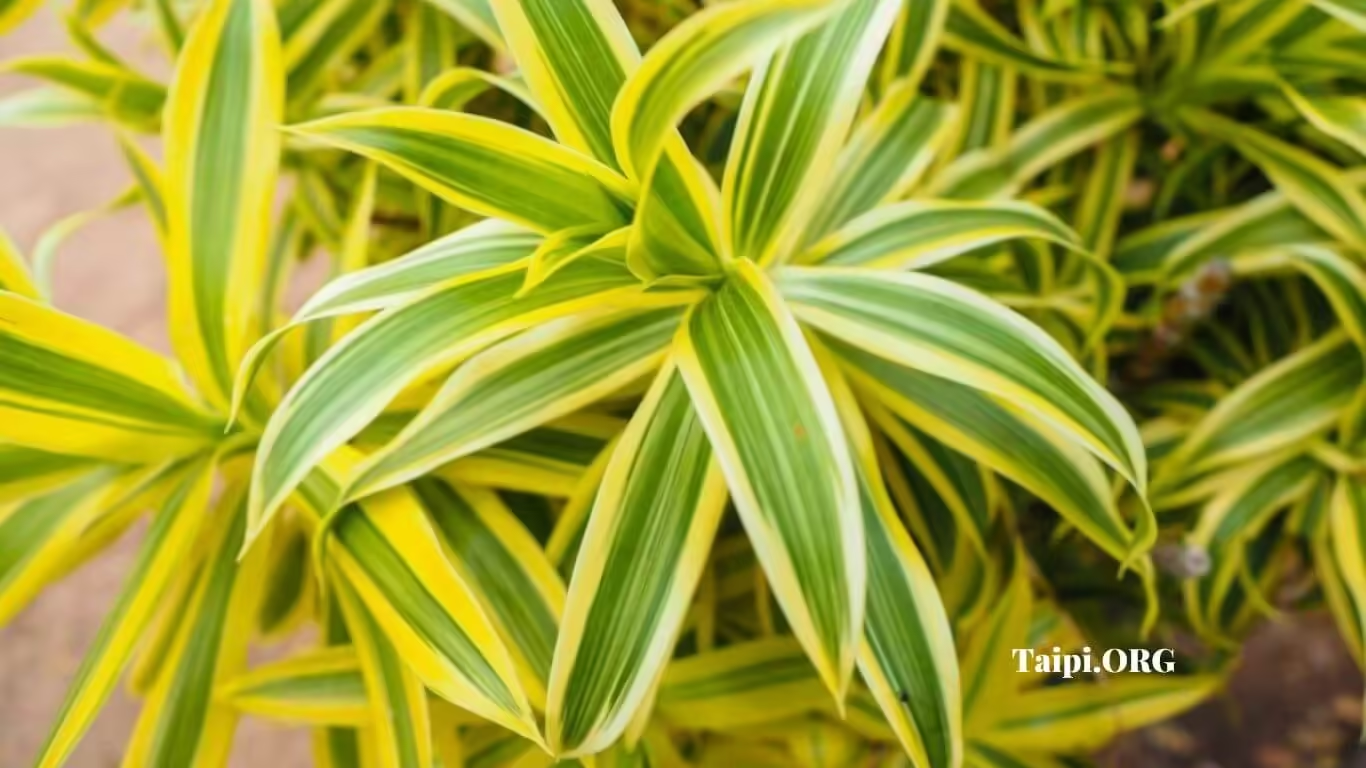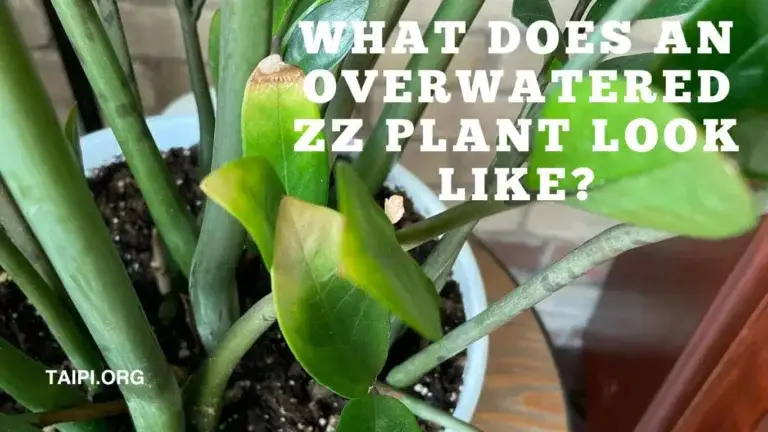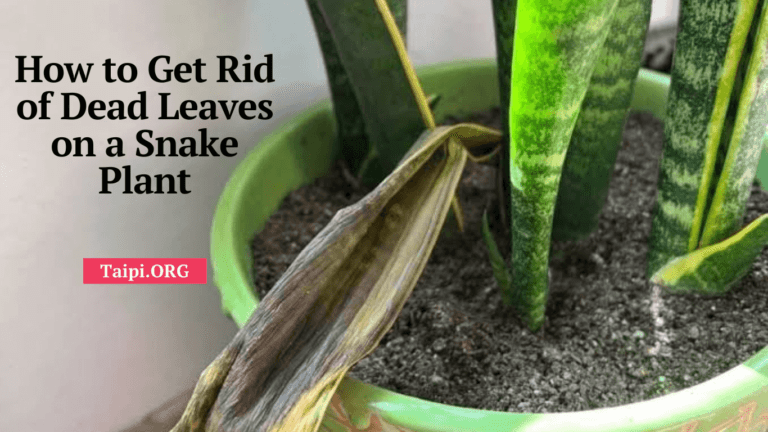How to Grow and Care for a Healthy Song of India Plant
In the lush landscapes of Mauritius, Madagascar, and Mozambique, the Song of India plant not only thrives but adds beauty and vibrance to the environment. Known scientifically as Dracaena reflexa var. angustifolia, this plant has garnered popularity worldwide for its striking appearance and its adaptability to indoor environments.
The Song of India plant care is essential whether you are a seasoned green thumb or a novice in the botanical realm, understanding how to maintain the health and vigor of this plant is crucial. Its resilience against common diseases and pests, alongside its minimal water needs and light requirements, makes it a favored choice among plant enthusiasts.
This article aims to guide you through the essentials of caring for your Song of India plant, from ensuring it receives the right amount of light to understanding its water needs, soil preferences, and temperature tolerance.
You will discover how to prevent common diseases such as root rot, brown leaves, and the attacks of pests like mealybugs, spider mites, and scale insects. Moreover, tips on propagation will help you expand your collection or share this splendid plant with friends and family.
Alongside these insights, the text will shed light on the song of India plant benefits, enhancing your appreciation and commitment to nurturing this remarkable plant to its fullest potential.
Short Answer:
To grow and care for a healthy Song of India plant, ensure it receives bright, indirect sunlight, as direct sun can scorch its leaves. Use well-draining soil and water moderately, allowing the top inch of soil to dry out between waterings to prevent root rot.
Maintain a warm environment with temperatures between 65-80°F (18-27°C) and provide high humidity, misting the leaves if needed. Fertilize monthly during the growing season with a balanced liquid fertilizer diluted to half strength.
Regularly wipe the leaves to keep them dust-free and prune occasionally to maintain shape and encourage bushier growth. Repot every 2-3 years or when the roots outgrow the container to ensure continued healthy growth.
Understanding the Basics of Song of India Plant Care

To ensure your Song of India plant becomes bushy and healthy, it’s crucial to understand the fundamental aspects of its care.
This tropical shrub, known for its striking dark green and chartreuse striped leaves, demands specific conditions to maintain its health and vibrancy. Here, we’ll guide you through identifying your plant and the essential conditions for its growth.
Identifying Your Song of India Plant
The Song of India plant is a clump-forming shrub with multiple branches and an upright, rounded form. Its branches, gently arching under the weight of spirally arranged leaves, boast green edges bordered with yellow.
Each narrow leaf, pointed at the tip, adds to the plant’s decorative appeal. This plant is not only a popular choice for indoor environments but also for landscaping in regions like Hawaii, where it can grow in part to full sun [4][5].
Essential Conditions for Growth
For optimal growth, the Song of India plant requires:
- Light: Bright, indirect sunlight for at least four hours daily is ideal. While the plant thrives under these conditions, too much direct sunlight can harm its leaves, causing scorch. However, it’s adaptable to mild morning sun and shade, making it versatile in various lighting conditions [7][9].
- Soil: A well-drained potting mix is crucial. The plant is not particular about soil types but prefers a peaty mix. To prevent faster decomposition of the soil due to high peat content, repotting annually during spring.
You can also create your own potting mix with bark, peat, pumice, vermiculite, and perlite can provide the perfect balance for your plant [7].
- Water: Keep the soil moist but not soaked from spring through fall, reducing water in the winter. The Song of India is susceptible to root rot, so overwatering should be avoided. Due to its sensitivity to fluoride, using bottled or purified water is recommended to prevent fluoride damage, which manifests as wilting on the leaf margins [7].
- Temperature and Humidity: Maintain room temperatures between 65 to 75 degrees Fahrenheit. Native to the warm climates of the Indian Ocean islands, the plant does not tolerate cold well. High humidity levels are also preferred to mimic its natural habitat [7][9].
- Additional Care: If the humidity levels are too low, the plant may display brown leaf tips. A simple solution is to place the pot on a bed of wet pebbles or regularly mist the plant to raise humidity levels. This not only benefits the plant’s health but also helps in keeping pests at bay [9].
Optimal Lighting Conditions for Song of India
Like any other indoor plant, the Song of India needs proper lighting. Here are some of the things to keep in mind about Song of India lighting requirements:
Ideal Light Exposure
For your Song of India plant to maintain its vibrant foliage, it’s crucial to provide it with bright, indirect sunlight for at least four hours each day [10][11][12]. Position your plant in an east-facing window indoors to ensure it receives gentle morning light followed by indirect light for the rest of the day, to prevent leaf scorch [11][12].
If you’re considering an outdoor setting, partial shade works best, especially in regions that align with USDA Hardiness Zones 11a-12a, protecting the plant from the harsh midday sun [10].
Common Light-Related Issues and Their Solutions
Leaf scorch is a common issue when the Song of India is exposed to too much direct sunlight. The leaves may exhibit a bleached appearance and the edges can become crispy [11][12]. To avoid this, ensure the plant is placed a few feet away from south- or west-facing windows or shield it with sheer curtains to diffuse the intensity of direct sunlight [11].
If the plant is not receiving enough light, you might notice it becoming leggy or the leaves losing their luster [13]. This indicates a need for more light.
Move your plant to a brighter location or use grow lights to supplement natural light, which can also aid in promoting flowering during less sunny months [10].
Regularly rotating your plant can also prevent it from leaning toward the light source, ensuring even growth and preventing the “Plantzilla” effect where it reaches unevenly toward the light [13].
Watering Your Song of India Plant Correctly
Watering is key to life. Several concerns about watering indoor plants emerge. Here are some of those concerns and how to address them:
How Often to Water Your Song of India
Your Song of India plant prefers to stay on the drier side, requiring about 0.8 cups of water every 12 days, especially when it’s not under direct sunlight and is housed in a 5.0″ pot [16]. This watering frequency ensures the soil remains dry enough to prevent root rot, a common issue with this plant.
It’s important to adapt your watering routine to the environment your plant is in. Factors such as light, temperature, and humidity can influence how quickly the soil dries out.
The Song of India requires less water during winter to align with its dormant phase [17]. Always check the top layer of the soil before watering; if it feels dry to the touch, it’s time to water [20].
Signs of Overwatering and Underwatering
Overwatering is a significant threat to your Song of India plant, leading to root rot and yellowing leaves, which are signs of distress. If the soil feels soggy, or you notice the leaves turning yellow or drooping, it’s crucial to let the soil dry out before watering again [16][17][19].
Overwatering can suffocate the plant’s roots, preventing them from absorbing oxygen and nutrients effectively. To fix this, replace the soggy soil with fresh, dry soil to help your plant recover [16].
Underwatering, while less common, can also affect your Song of India plant. Symptoms include leaves lying flat against the stem, turning brown and papery from the bottom up [21]. This condition can be remedied by increasing light exposure and reducing watering frequency, allowing the plant to recover and outgrow any potential fungal issues [21].
Expert Tips:
Water Quality Matters: Use filtered or rainwater to avoid fluoride damage, which can cause wilting on the leaf margins and yellowed leaves [17][20].
Check Soil Moisture: Before watering, stick your finger into the soil. If the top couple of inches are dry, it’s time to water. If it’s still moist, wait a few more days [20].
Adjust with Seasons: Dial back on watering during cooler months and increase during warmer, sunnier periods[20].
Ensure Proper Drainage: Good drainage is crucial. Ensure your pot allows excess water to escape to prevent root rot [20].
FAQs:
1. How can I tell if I’m overwatering my Song of India plant?
Look for yellowing leaves, a general look of despair, and soggy soil. These are telltale signs of overwatering [19].
2. What should I do if I’ve overwatered my plant?
Let the soil dry out completely before watering again. Consider repotting with a well-draining soil mix if the soil feels like a swamp [19].
3. Can I use tap water for my Song of India plant?
It’s best to avoid tap water due to its fluoride content, which can harm your plant. Use filtered or rainwater instead
4. How does the watering need change with seasons?
Water less during winter and increase watering during the warmer months to match the plant’s growth cycle [17] [20].
5. What are the signs of underwatering?
Leaves lying flat against the stem and turning brown from the bottom up are signs of too little water [21].
Choosing the Right Soil and Pot
When it comes to ensuring the health and growth of your Song of India plant, selecting the appropriate soil and pot is
paramount. This section delves into the specifics of soil mix requirements and pot selection, highlighting the importance of drainage to prevent common issues such as root rot.
Soil Mix Requirements
The Song of India plant thrives in a peaty, well-drained potting mix. This plant is not overly fussy about its soil, but it does require a mix that can retain moisture without becoming waterlogged.
An ideal soil mix includes components like bark, peat, pumice, vermiculite, and perlite. These elements work together to ensure good drainage and aeration, preventing the soil from decomposing too quickly.
It’s recommended to repot the plant annually, preferably in spring, to refresh its soil and maintain optimal health [23][25][24].
To enrich the soil further, use a good organic potting mix that includes high-quality ingredients. Brands like Ocean Forest & Happy Frog are recommended for their nutrient-rich composition.
Adding a handful or two of pumice or perlite, along with local organic compost, can enhance the soil’s drainage capabilities and provide your plant with the nutrients it needs for robust growth [24].
Pot Selection and Drainage
The choice of pot plays a significant role in the health of your Song of India plant. Unglazed ceramic or terra-cotta pots are ideal due to their porous nature, which helps prevent excess water retention. These materials allow the soil to breathe and dry out more efficiently compared to plastic or metal pots, which tend to hold moisture longer [23][25].
When repotting, ensure the new pot is slightly larger than the current one but avoid choosing a pot that’s excessively large, as it may retain too much moisture.
Fill the pot with your chosen potting mix, leaving space in the center for the plant’s roots. Carefully transfer the plant, shaking off excess soil from its roots before placing it in the new pot. Fill any empty spaces with soil and water thoroughly, allowing excess water to drain away [25][26].
Drainage holes are crucial in any pot to prevent water from pooling at the bottom, which can lead to root rot. If you find a pot that’s perfect in every way except for the lack of drainage holes, don’t hesitate to drill some yourself.
Remember, the right pot should feel like a cozy home for your plant, providing enough room for growth without being too spacious [26].
By following these guidelines for soil mix requirements and pot selection, you’ll create an ideal environment for your Song of India plant to thrive.
Regularly check the soil’s moisture level and adjust your watering schedule accordingly to keep your plant healthy and vibrant.
Temperature and Humidity Needs
Maintaining the right temperature and humidity levels is crucial for the health of your Song of India plant. This section will guide you through the ideal temperature range and how to maintain high humidity levels, ensuring your plant thrives.
Ideal Temperature Range
The Song of India plant prefers a cozy climate, thriving in temperatures between 65 and 75 degrees Fahrenheit. This range simulates the warm climate of the Indian Ocean islands, its native habitat.
Keep the plant away from cold drafts and sudden temperature changes, which can cause stress and damage. Consistent temperatures within this range create an optimal environment for growth and vitality [28][29][30].
Maintaining High Humidity Levels
Humidity plays a significant role in the well-being of your Song of India plant, with the ideal range being 40-60%. This level of humidity supports lush growth and prevents issues such as brown-tipped leaves and drooping.
Use a hygrometer (pictured ⬆) to monitor the air’s moisture. You can adjust the humidity using humidifiers or dehumidifiers and ventilation to decrease it in overly moist conditions.
Additionally, pebble trays and grouping plants together can naturally boost humidity levels around your plant [31][32].
Expert Tips:
Monitor with a Hygrometer: Regularly check humidity levels with a hygrometer to ensure they stay within the ideal range [31].
Adjust for Seasons: Use humidifiers in dry seasons and dehumidifiers or ventilation in humid seasons to maintain balance [31][32].
Increase Humidity Naturally: Group plants together or use a pebble tray for an easy humidity boost [32].
Avoid Extremes: Keep your plant away from direct heat sources and cold drafts to prevent stress [28][30].
FAQs:
1. What temperature is too cold for a Song of India plant?
Temperatures below 65 degrees Fahrenheit can harm the plant, causing stress and potential damage [29].
2. How can I increase humidity for my plant?
Use a humidifier, group plants together, or set your plant on a pebble tray filled with water [32].
3. Can I keep my Song of India plant in the bathroom for higher humidity?
Yes, bathrooms often have higher humidity levels, making them a good spot for these plants, provided they receive sufficient light [32].
4. What are the signs of incorrect humidity levels?
Brown leaf tips indicate low humidity, while yellowing leaves or fungal growth suggest too much moisture [31][32].
Fertilizing Your Song of India
To ensure your Song of India plant flourishes, understanding its fertilization needs is paramount. This section will guide you through when and how to fertilize your plant, as well as the types of fertilizers that are most beneficial.
When and How to Fertilize
Your Song of India plant benefits from a bi-weekly fertilization schedule during the spring and summer months, which are its growth-intensive periods.
A balanced, water-soluble 10-10-10 fertilizer, diluted by half, is recommended to prevent nutrient excesses that can harm the plant [37][34].
Pause fertilization during the winter months, as this is the plant’s dormant period, and it won’t require the extra nutrients [37][34].
Before applying fertilizer, always water your plant thoroughly. This practice helps prevent root burn and ensures the nutrients are well-received, promoting even distribution throughout the soil [37].
Adjust your care routine to support the flowering process once you spot buds. This may include tweaking the frequency of fertilization to encourage blooming [37].
Types of Fertilizers to Use
Phosphorus plays a critical role in flower formation and should be a key component of the fertilizer you choose for your Song of India plant. The NPK ratio—nitrogen (N), phosphorus (P), and potassium (K)—is vital, with phosphorus taking center stage for bloom promotion.
However, don’t overlook the importance of micronutrients such as boron and molybdenum, which support cell growth and the nitrogen fixation process, respectively [35].
Organic fertilizers are highly recommended for the Song of India plant. These fertilizers release nutrients slowly, ensuring your plant receives a steady supply of what it needs to thrive without the risk of nutrient burn. Additionally, organic fertilizers contribute to soil health by supporting earthworms and microbes [37].
If you are looking for a more hands-off approach, use a drip system with a fertilizer injector. This method provides a consistent nutrient supply to your plant, reducing the risk of over or under-fertilizing [37].
Alternatively, foliar feeding with a diluted bloom fertilizer can encourage blooming, but remember to apply sparingly to avoid harming the plant [37].
Expert Tips:
Dilute Your Fertilizer: Always dilute your fertilizer to half strength to avoid over-fertilizing, which can damage your plant [37][34].
Pause in Winter: Hold off on fertilizing during the winter, as your plant is in a dormant state [37][34].
Water First: Water your plant before fertilizing to prevent root burn [37].
Choose Organic: Opt for organic fertilizers to provide a slow-release of nutrients and avoid nutrient burn [37].
FAQs:
1. How often should I fertilize my Song of India plant?
Fertilize bi-weekly during spring and summer with a diluted 10-10-10 fertilizer. No fertilization is needed in winter
2. What type of fertilizer is best for my Song of India plant?
A balanced, water-soluble 10-10-10 fertilizer, preferably organic and diluted by half, is ideal [37][35].
3. Can I over-fertilize my Song of India plant?
Yes, over-fertilizing can lead to nutrient excesses and harm your plant. Always dilute your fertilizer and follow a bi-weekly schedule during the growing season [37].
4. Should I fertilize my Song of India plant during winter?
No, hold off on fertilization during winter as the plant is dormant during this time [37][34].
5. What are the signs of over-fertilization?
Symptoms include yellowing leaves, leaf burn, and a general look of distress. If you notice these signs, reduce the frequency and strength of fertilization [37].
Pruning for Health and Aesthetics
Pruning your Song of India plant is not frequently necessary due to its slow growth rate. However, when it becomes essential, it’s typically for propagation or when the stems become too leggy.
By cutting down these stems, new sprouts will eventually appear towards the top, revitalizing the plant’s appearance and encouraging healthy growth [44].
The Song of India develops into a cane or trunk form over time, altering from its initial lush foliage distribution along the stems. If you prefer to maintain a fuller look rather than a ‘trunky’ appearance, you can prune the top parts off for propagation.
NB. Regular pruning to maintain a certain aesthetic might limit the plant’s height growth over time🙄 [44].
To encourage a bushier and more compact plant, cutting the branches of caned dracaenas, such as the Song of India, stimulates new foliage to sprout below the stem cut.
This technique is particularly beneficial if you wish to keep their houseplants at a certain height [45]. During the active growth phases in spring and summer, pruning aligns with the plant’s natural cycle, promoting healthier and more vigorous development.
Post-prune care involves watering the plant and avoiding heavy fertilizers initially to allow for recovery without overwhelming the plant [40].
Cleaning and Dusting Leaves
Maintaining clean leaves is vital for the Song of India plant’s health, as dust accumulation can hinder its ability to photosynthesize efficiently.
Clean your plant’s leaves at least once a month to remove dust and other particles that could block sunlight. Use a soft cloth moistened with water to gently wipe the tops of the leaves, supporting them with your non-dominant hand to avoid damage [43].
A bit of leaf shine applied to a cloth can be effective for more stubborn spots, such as hard water deposits or fertilizer residue.
NB. Only use leaf shine on the tops of the leaves and to buff it off afterwards, leaving a nice shine and ensuring that nothing obstructs the plant’s ability to absorb light [43].
The easiest way to clean your Song of India plant is in the sink or shower, where dust can be easily rinsed off.
Beware that some commercial leaf shine products, can block the plant’s pores and interfere with its breathing process [44].
Expert Tips:
Use a Soft Cloth: For dusting, always use a soft, damp cloth to avoid damaging the leaves [43].
Avoid Commercial Leaf Shine: These products can block the plant’s pores. Instead, opt for gentle wiping with water or a homemade leaf shine solution for tough spots [43][44].
Prune Sparingly: Since the Song of India grows slowly, prune primarily for propagation or to remove leggy stems
[44].
Encourage Bushiness: Prune just above a leaf node to promote denser foliage and a more compact growth habit[45].
FAQs:
1. How often should I clean my Song of India plant’s leaves?
Aim to clean the leaves at least once a month to ensure optimal photosynthesis and growth [43].
2. What should I use to clean the leaves?
A soft cloth moistened with water is sufficient for regular cleaning. For stubborn spots, a bit of leaf shine on the cloth can help [43].
3. Is pruning necessary for the Song of India plant?
Pruning is not frequently necessary due to its slow growth, but it can be beneficial for propagation or controlling legginess [44].
4. Can I use commercial leaf shine on my Song of India plant?
It’s best to avoid commercial leaf shine products as they can block the plant’s pores. Gentle cleaning with water or a mild leaf shine solution is recommended [44].
Dealing with Pests and Diseases
Your Song of India plant can become home to various pests such as spider mites, scale, mealybugs, fungus gnats, and aphids. These pests can significantly harm your plant by sucking the sap from the leaves, leading to a weakened plant and potentially causing leaf loss over time [46].
- Spider Mites: Tiny but harmful, spider mites suck the life out of leaves, leaving behind webbing and a stippled appearance. Combat them with neem oil, insecticidal soap, or by simply wiping the leaves down regularly [46].
- Scale Insects: Appearing as small bumps on stems and leaves, scale insects set up waxy, shell-like homes. Remove them with rubbing alcohol, horticultural oil, or by introducing natural predators like ladybugs [46].
- Mealybugs: These pests form cottony masses on your plant and can be removed by dabbing with rubbing alcohol or spraying with insecticidal soap [46].
- Fungus Gnats: Thriving in moist soil, fungus gnats can be controlled by letting the soil dry between waterings and using sticky traps for adult flies [47].
- Aphids: Known for crowding around new growth, aphids can be dispersed with a strong water spray or insecticidal soap [46].
Disease Prevention and Treatment
Fusarium leaf spot is a common fungal disease in Song of India plants, causing brown spots or tips on the leaves [49]. To prevent and treat this and other diseases:
- Fungicide Application: Apply fungicide to prevent the spread of fungi. For Fusarium leaf spot, removing heavily affected leaves is crucial to stop further spread [49].
- Soil Amendment: Amend your soil with perlite or sand to improve drainage, preventing waterlogging and root rot, which can attract pests and foster disease [50].
- Proper Hydration: Maintain a balance in watering; overzealous watering can drown your plant in soggy conditions, making it susceptible to diseases [50].
- Humidity and Temperature Control: Keep the humidity and temperature around your plant optimal—not too muggy, not too dry. Proper air circulation is essential to prevent fungal growth [50].
Expert Tips:
Regular Inspections: Check your plants regularly for early signs of pests or disease. Early detection can prevent a full-blown infestation or outbreak [46].
Isolate New Plants: Quarantine new additions to your plant collection to prevent the spread of pests or diseases to your existing plants [46].
Sanitize Tools and Pots: Clean your gardening tools and pots regularly to kill off unseen pests and pathogens and prevent their spread [46].
Optimize Plant Care: Vigor and vitality are your plant’s best defenses against pests and diseases. Ensure your Song of India gets the right balance of light, water, and nutrients [47].
FAQs:
1. What are the signs of spider mite infestation?
Look for fine webs under leaves and a speckled or dusty appearance on foliage [47].
2. How can I prevent fungus gnats?
Allow the soil to dry between waterings and use sticky traps to catch adult flies [47].
3. Can overwatering attract pests?
Yes, overwatering creates soggy conditions that can attract pests and foster disease [50].
4. What should I do if I notice Fusarium leaf spot on my plant?
Remove affected leaves and apply fungicide to prevent further spread of the fungus [49].
5. How often should I inspect my plant for pests?
Regular inspections, at least once a month, can help catch pests early before they become a larger problem [46].
How to Propagate Song of India
One propagation method works best for the Song of India.
Stem Cutting Method
To propagate your Song of India plant, begin by selecting the right tools. You will need cutting shears or heavy-duty scissors. If your plant has a thick stem, pruning shears may be more appropriate.
Before starting, it’s crucial to sterilize your cutting tools and hands with alcohol to prevent the introduction of pathogens to the plant [55][52].
First, identify a healthy stem for cutting. It should be at least 6 inches long.
Make a clean cut at a 30-degree angle on the stem. This angled cut increases the surface area for rooting and helps in absorbing more water [55][56][53].
After cutting, remove the lower leaves from the stem. This is because, during the rooting process, the plant will not require all these leaves, and they might just dry off [55].
Rooting and Transplanting
Once you have your cutting, it’s time to root it. You can choose to root the cutting in water or a mix of peat moss and perlite. If rooting in water, ensure to change the water weekly to prevent cloudiness and the formation of algae.
Let tap water sit for 48 hours before use to off-gas chlorine, although the Song of India plant is quite resilient and can tolerate regular tap water [55][56].
Position the cutting in a clear vessel, away from direct light, to monitor root development. To avoid algae growth, you can place the clear vessel inside an opaque container [55].
After the cutting has developed a strong root system, which might take a month or more due to the slow-growing nature of the Song of India, it’s time to transplant it into soil. Prepare a potting mix of 80% indoor potting mix, 15% worm castings, and 5% perlite for optimal growth. This combination creates a loamy mix that supports healthy root development [55][52].
Create a hole deep and wide enough to accommodate the roots of your cutting. Before placing the cutting into the hole, it’s beneficial to add mycorrhizal fungi to the soil. This beneficial fungus aids in nutrient uptake.
Gently place the cutting in the hole, ensuring the roots are completely covered, and then backfill with soil. To provide stability to the newly transplanted cutting, you can use a chopstick or similar support until the plant is firmly established [55].
Expert Tips:
Always use sterilized cutting tools to prevent disease transmission [55].
For water rooting, change the water weekly and use dechlorinated water for better results [55].
When transplanting, adding mycorrhizal fungi to the soil can significantly boost nutrient uptake and support the young plant’s growth [55].
FAQs:
1. How long does it take for a Song of India cutting to root?
Rooting can take over a month due to the plant’s slow-growing nature. Patience is key [55].
2. Can I root the cutting directly in soil?
Yes, you can root Song of India cuttings in a mixture of peat moss and perlite or directly in soil. Ensure the soil is consistently moist but not soggy [56].
3. How often should I change the water when rooting in water?
Change the water every week to prevent cloudiness and algae formation [55].
4. When is the best time to propagate Song of India?
Spring is the ideal time for propagation, as the plant is in its active growth phase [56].
5. How do I know when to transplant my rooted cutting into soil?
Once the cutting has developed a robust root system, usually in about a month or more, it’s ready to be transplanted into soil [55].
6. How should I care for my Song of India plant indoors?
To properly care for a Song of India plant indoors, ensure it receives indirect sunlight and is kept in warm conditions. The plant thrives in humid environments, so placing the pot on a tray of water-covered pebbles or regularly misting the
plant can help. It’s important to use a pot with good drainage and to keep the soil consistently moist without overwatering. Fertilizing with a balanced fertilizer once or twice a year is also beneficial.
7. What kind of fertilizer is best for a Song of India plant?
For the Song of India plant, using a light, well-draining potting mix is key. Mixing a few handfuls of perlite with regular cactus soil is recommended. This plant grows slowly and generally does not require additional fertilizer beyond what is found in new potting soil. Replacing the potting soil annually should sufficiently replenish its nutrients.
8. How frequently should I water my Song of India plant?
The Song of India plant prefers a humid environment and likes its soil to be consistently moist. It is somewhat drought-tolerant and can handle occasional dry periods. For best results, water the plant once every two weeks, adjusting based on the humidity and temperature of your environment.
9. When is the best time to prune a Song of India plant?
The optimal time to prune a Song of India plant is at the start of its growing season, which aligns with warmer weather. Pruning during the plant’s dormancy period, typically in late winter or early spring, can help prevent the plant from expending energy on parts that will be removed. This timing helps encourage vigorous growth and health during the active growing months.
My Closing Thoughts
Throughout this comprehensive guide, we’ve explored the essentials of cultivating a Song of India plant, underscoring the importance of specific light, water, soil, temperature, and humidity requirements to ensure its healthy growth and vibrant appearance.
The expert tips provide you deep dive into nurturing practices, from the right fertilization approach to dealing with pests and diseases effectively.
Notably, the art of propagation is detailed, offering a pathway to not only expand your green space but to share this beauty with others.
In essence, the journey from understanding the basics of care to implementing advanced tips paints a holistic picture of what it truly takes to nurture the Song of India plant to its full potential.








